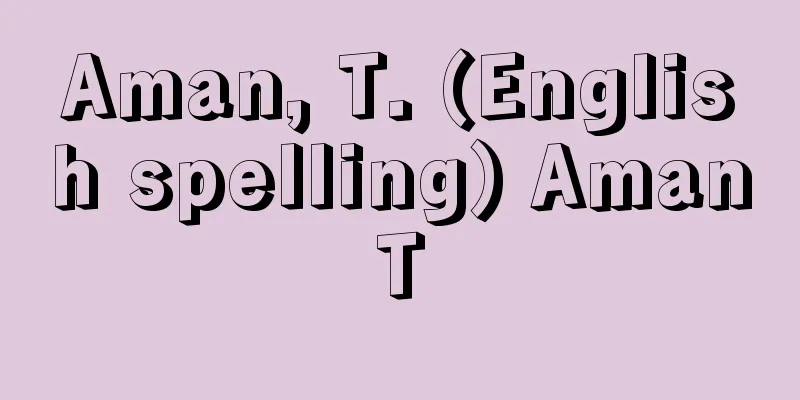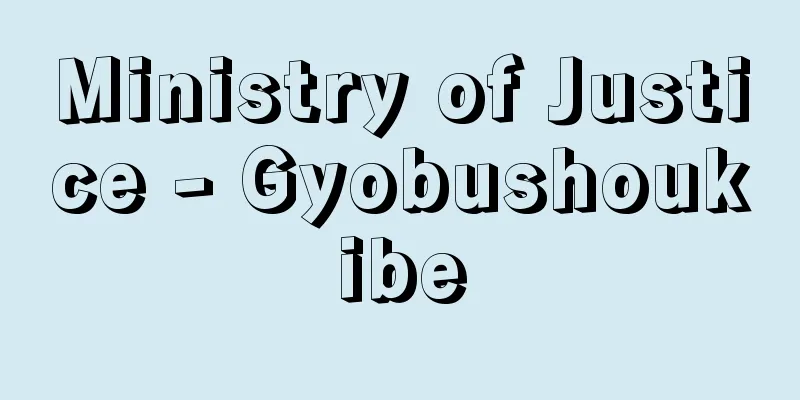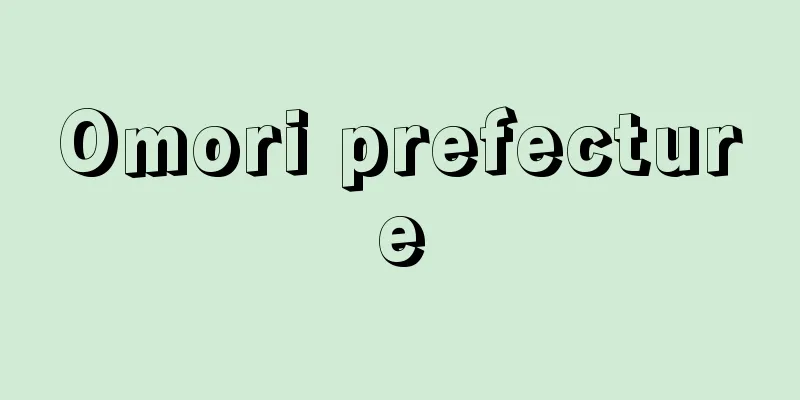Imperial Decree - Choku

|
Along with the Imperial Sacred Written Document (Shosho), this is a document format prescribed in the Imperial Order (Kushikiryo) Imperial Order Format, which conveys the will of the Emperor. It is also called the Imperial Order. There are various theories among the Myobo scholars regarding the distinction between the Imperial Sacred Written Document and the Imperial Order (Shosho), such as (1) the Imperial Sacred Written Document for extraordinary cases and the Imperial Order for ordinary cases, (2) the Imperial Sacred Written Document for important matters and the Imperial Order for minor matters, (3) the Imperial Sacred Written Document for extraordinary important matters and the Imperial Order for ordinary minor matters, and (4) the Imperial Sacred Written Document for cases where an Imperial decree should be issued and the Imperial Order for other cases (Article on the Official Order and Imperial Order Format in the Ritsuryo Shuge). According to the Yoro Code, except when imperial edicts were directly transmitted to the Five Guards and the Left and Right Hyogo, (1) the imperial edict was transmitted to the Ministry of Central Affairs by the “recipient,” (2) the Naiki drafted the text of the imperial edict and the date, (3) the Nakatsukasa directly submitted it to the Emperor, (4) the Emperor approved it, the Nakatsukasa Kyo, Taifu, and Shoyu added it, the original was kept at the Ministry of Central Affairs and a copy was made, (5) the copy was sent to the Benkan, (6) the Shi drafted and signed the section following the “Imperial edict as above,” (7) the Daiben, Chuben, and Shoben added it, and this was kept at the Benkan as a draft, (8) the Benkan made a copy and implemented it. In contrast, the Taiho Code had three methods: (A) an Imperial decree was prepared and then sent to the Ministry of Central Affairs via the Magistrates, (B) an Imperial decree prepared by the Ministry of Central Affairs was sent directly to the various offices for implementation without going through the Magistrates, and (C) in the case of an emergency, an Imperial order was sent from the Ministry of Central Affairs to the various offices without preparing an Imperial decree, and then a formal Imperial decree was prepared. The Yoro Code abolished (B), made (A) the basis, and made (C) an exceptional measure, but in the case of (A), a Daijokanpu (Daijokanpu) was attached to the Imperial decree for the various offices in Kyoto, as with the Imperial document, and a Tou Imperial decree was prepared and distributed for the various offices overseas. No documents in the exact format of the Official Orders, Imperial Decrees, and Ceremonial Articles remain in the Shoso-in Treasure Repository, but there are Nara period "imperial edicts" such as Emperor Shomu's Imperial Petition for Grants, Emperor Kōken's Imperial Edict for Grants, and Emperor Junnin's Imperial Edict for the Seal of Todai-ji Temple. In the Heian period, imperial edicts written by the Emperor's hand appeared, and there was confusion about the format of ceremonial documents as well, regarding the presence or absence of "Gokakujitsu" and "Gokakuka," which should not have existed in imperial edicts, but they continued to be used for imperial edicts for the third empress, imperial edicts for the title of empress, and imperial edicts for replies to petitions from regents and other officials. [Tomoyasu Kato] [Reference] |Source: Shogakukan Encyclopedia Nipponica About Encyclopedia Nipponica Information | Legend |
|
詔書(しょうしょ)と並んで天皇の意思を下達する、公式令(くしきりょう)勅旨式条に定められた文書様式。勅旨ともいう。詔書との区別について、(1)臨時の場合に詔書、尋常の場合に勅旨、(2)大事に詔書、小事に勅旨、(3)臨時の大事に詔書、尋常の小事に勅旨、(4)宣命(せんみょう)すべきときに詔書、そうでないときに勅旨、をそれぞれ用いるとするなど明法(みょうぼう)家の間でも諸説がある(『令集解(しゅうげ)』公式令詔書式条)。 養老(ようろう)令によれば、勅旨は、五衛府(えふ)・左右内兵庫(ひょうご)に直接伝達される場合を除き、(1)「受勅人」による勅旨の中務(なかつかさ)省への伝達、(2)内記(ないき)による勅旨本文と年月日の起草、(3)中務による天皇への直接覆奏(ふくそう)、(4)天皇の裁可、中務卿(きょう)・大輔(たいふ)・少輔(しょう)の加署、正文を中務省に留め写(うつし)一通を作成、(5)写一通の弁官への送付、(6)史(し)による「奉勅旨如右」以下の部分の起草と加署、(7)大弁・中弁・少弁の加署、これを弁官に留め案とする、(8)弁官での写一通の作成、施行、という手続を経ることになっていた。これに対し大宝(たいほう)令では、(A)勅旨を作成したうえで中務省から弁官を経て施行される方法、(B)中務省で作成した勅旨が弁官を経ることなく直接諸司に下され施行される方法、(C)緊急の施行に際して、勅旨を作成することなく中務省から勅命が諸司に伝達され、のちに正勅旨を作成する方法、の3種があった。養老令では、(B)を廃止し、(A)を基本とし、(C)を例外的措置としたが、(A)の方式の場合、詔書と同様、在京諸司に対しては勅旨に太政官符(だいじょうかんぷ)を副(そ)え、在外諸司に対しては謄(とう)勅官符を作成し頒下(はんか)された。 公式令勅旨式条による書式そのままのものは現存しないが、正倉院には聖武(しょうむ)天皇勅施入願文、孝謙(こうけん)天皇施入勅、淳仁(じゅんにん)天皇東大寺封戸(ふこ)勅などの奈良時代の「勅書」が残されている。平安時代に入ると、宸筆(しんぴつ)の勅書が現れ、また本来、詔書とは異なり、ないはずの「御画日(ごかくじつ)」「御画可(ごかくか)」の有無をめぐり、儀式書でもその書式についての混乱がみられるが、准三后(じゅさんごう)勅書・徽号(きごう)勅書や、摂関などの上表に対する勅答に際しての勅書として引き続き使用されている。 [加藤友康] [参照項目] |出典 小学館 日本大百科全書(ニッポニカ)日本大百科全書(ニッポニカ)について 情報 | 凡例 |
Recommend
Song San Cai (English spelling)
Sancai pottery from the Song Dynasty in China. The...
Gabelfrühstück (English spelling)
…On the other hand, a simple meal that does not r...
Nicole (English spelling)
Occupation/Title singer date of birth October 7, ...
Artogeia napi japonica (English name) Artogeianapijaponica
…[Takakura Tadahiro]. … *Some of the terminology ...
ramjet engine
...In turbojet engines, jet noise is the largest ...
Sanno Shinto - Sanno Shinto
Sanno refers to Hiyoshi Taisha Shrine in Omi. The ...
automatic depositor
...We are now entering the age of electronic bank...
Jasminum gracillimum (English spelling) Jasminum gracillimum
…[Murata Gen]. … *Some of the terminology that me...
Salvador de Madariaga
1886‐1978 Spanish writer. He qualified as an engin...
Intersex
An organism that has a distinction between male a...
Confucian funeral
A funeral ceremony performed by Confucian scholars...
Gaius Julius Caesar Octavianus
…Being favored by Caesar, who had no legitimate s...
Eekaa
Arab meter. Rhythmic type or rhythmic cycle. Becau...
Phinopomastus
...General term for birds of the family Phoenicul...
Bondi, H.
…In the late 1940s, the value of the Hubble const...









